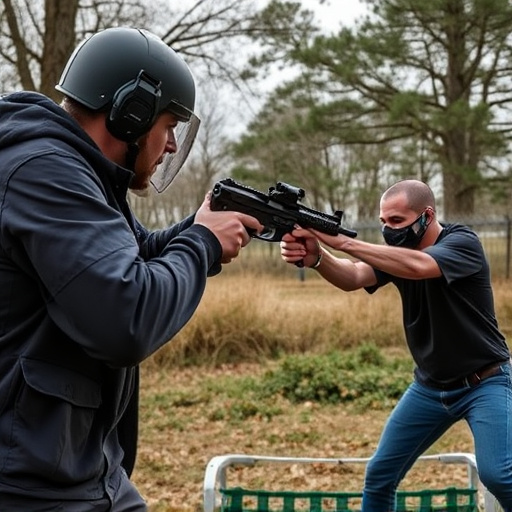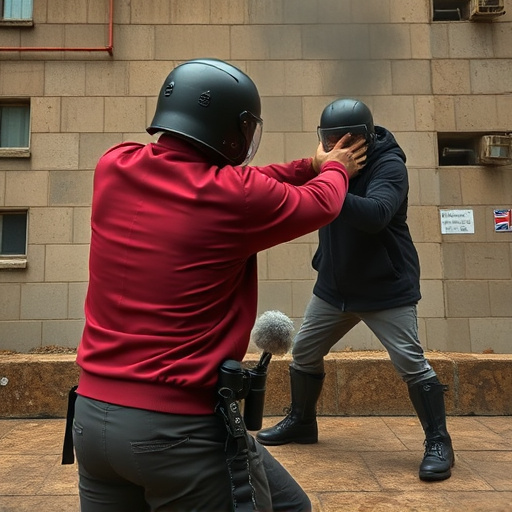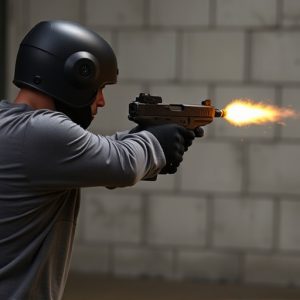Safeguarding Self-Defense: Preventing Stun Gun Misfires for College Students
Self-defense stun guns designed for college students require understanding their mechanism, safe han…….
Self-defense stun guns designed for college students require understanding their mechanism, safe handling, and regular maintenance to prevent misfires. Advanced safety features like motion-activated triggers and digital locks enhance security in shared campus environments. Students should familiarize themselves with device operation, target areas, range, local regulations, and keep their stun guns charged and stored securely. Regular practice sessions and staying informed about campus safety protocols further ensure personal security.
Self-defense is a serious consideration, especially for college students navigating bustling campuses. Stun guns, as a nonlethal option, have gained popularity. However, understanding their mechanism and potential misfires is crucial for safe usage. This article explores advanced safety features designed to prevent stun gun misfires and offers best practices tailored for college students seeking effective self-defense options. By familiarizing yourself with these aspects, you can make informed decisions when choosing a stun gun for personal protection.
- Understanding Stun Gun Mechanism and Common Misfires
- Advanced Safety Features for Self-Defense Stun Guns
- Best Practices for College Students: Using Stun Guns Effectively and Safely
Understanding Stun Gun Mechanism and Common Misfires

Stun guns, often carried for self-defense, operate by delivering an electric current through a conductive path to disrupt muscular control, rendering the target incapacitated. However, understanding the intricate mechanism is key to preventing misfires, which can be disorienting and even dangerous. Common misfires often stem from issues like dry or dirty contacts, improper grip, or interference from metal objects. For college students considering self-defense stun guns, it’s crucial to grasp these fundamentals.
Self-defense stun guns for college students should prioritize safety features that mitigate the risk of misfire. This includes robust construction to prevent accidental activation and user-friendly design ensuring proper handling. Regular maintenance, such as keeping contacts clean and the device dry, can significantly reduce misfire incidents. Understanding how your stun gun works and adhering to the manufacturer’s guidelines for care and usage is essential in maximizing its effectiveness as a safety tool.
Advanced Safety Features for Self-Defense Stun Guns

Self-defense stun guns designed for college students often come equipped with advanced safety features to prevent accidental misfires. These devices are engineered to ensure users can protect themselves effectively while minimising risks. One such feature is the motion-activated trigger, which requires the user to initiate the stun by moving their body or arm, preventing accidental discharges. Additionally, many stun guns incorporate LED indicators that signal when the device is charged and ready for use, helping students stay prepared.
Some models even include digital safety locks, allowing users to set personal codes or passcodes to prevent unauthorized usage. These safety measures are particularly beneficial in campus settings where stun guns might be stored in dormitories or shared spaces. By combining these advanced safety features with their compact size and ease of use, self-defense stun guns offer college students a reliable tool for personal safety while navigating the challenges of higher education.
Best Practices for College Students: Using Stun Guns Effectively and Safely

For college students considering self-defense stun guns, understanding how to use them effectively and safely is paramount. Start by familiarizing yourself with the device’s operation; most stun guns have simple mechanisms, but it’s crucial to know the activation process, target areas, and the range of effectiveness. Regular practice sessions can help you develop muscle memory in using the stun gun quickly and accurately.
When carrying a self-defense stun gun on campus, ensure it is stored securely in a dedicated case or holster, and always keep it charged. Be mindful of local laws regarding stun guns; some areas may have restrictions on their use and carry. Additionally, inform yourself about safe storage practices to prevent accidental activation or misuse by others. Regularly reviewing safety protocols and staying informed about self-defense strategies can significantly enhance your personal security while in college.
Stun guns, when used properly, can be effective tools for self-defense, especially for college students navigating unfamiliar environments. Understanding the mechanism and incorporating advanced safety features are key to preventing misfires. By adhering to best practices outlined in this article—including regular training, maintaining proper grip and technique, and keeping devices in reliable condition—college students can ensure their stun guns serve as a reliable deterrent. Armed with knowledge and caution, individuals can protect themselves while navigating the challenges of campus life.


